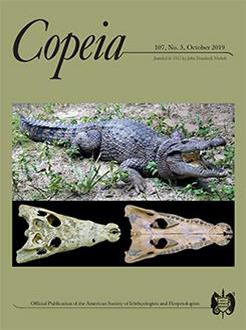Anuran vocalization is one of the most energetically expensive behaviors recorded in vertebrates. To sustain this behavior, circulating hormones in male frogs must act to promote calling behavior while mobilizing energy reserves. We hypothesize that this is accomplished through the actions of testosterone (T) and corticosterone (CORT). T is thought to elicit calling, while CORT mobilizes energy reserves. Eventually, high CORT concentrations and low energy reserves suppress calling behavior. We evaluated this hypothesis in light of the reproductive ecology of the Pig Frog, Lithobates grylio. Plasma samples from calling and non-calling males were collected during four months of the reproductive season. Calling males were shown to have significantly higher concentrations of circulating T and high body conditions. Conversely, non-callers exhibited elevated CORT and low body conditions. There was no correlation between the two hormones, but circulating T concentrations did decrease over the season. Lastly, we found that CORT is positively correlated with circulating glucose (in non-callers); this finding is supported by CORT's known role in gluconeogenesis. Taken together, these data indicate that circulating hormones and available energy reserves likely influence calling behavior in L. grylio.
How to translate text using browser tools
25 September 2019
Testosterone and Corticosterone Profiles and Body Condition of Calling and Non-calling Lithobates grylio
Whitney G. Walkowski,
Brian I. Crother,
Roldán A. Valverde





